Aliyah Baerg
Advisor: Liane Veness
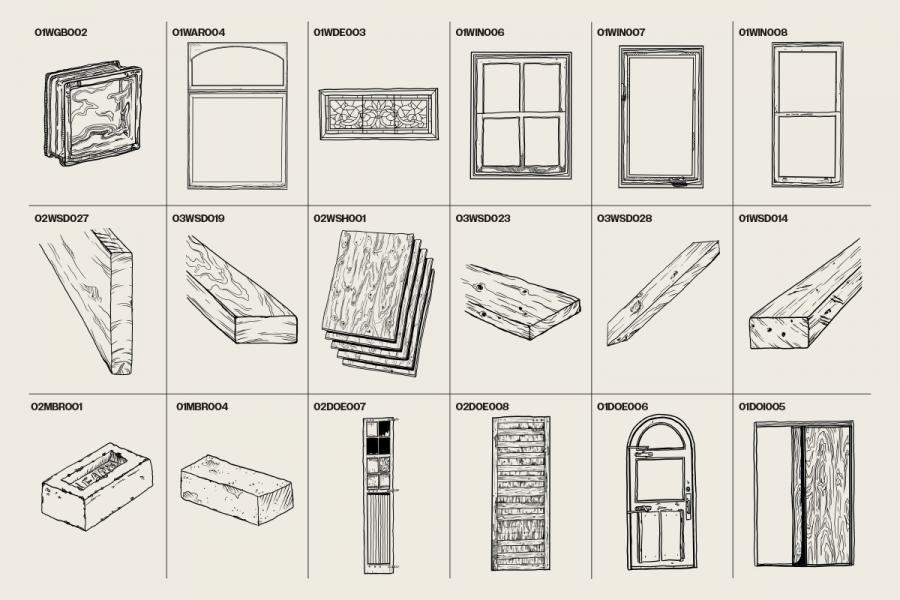
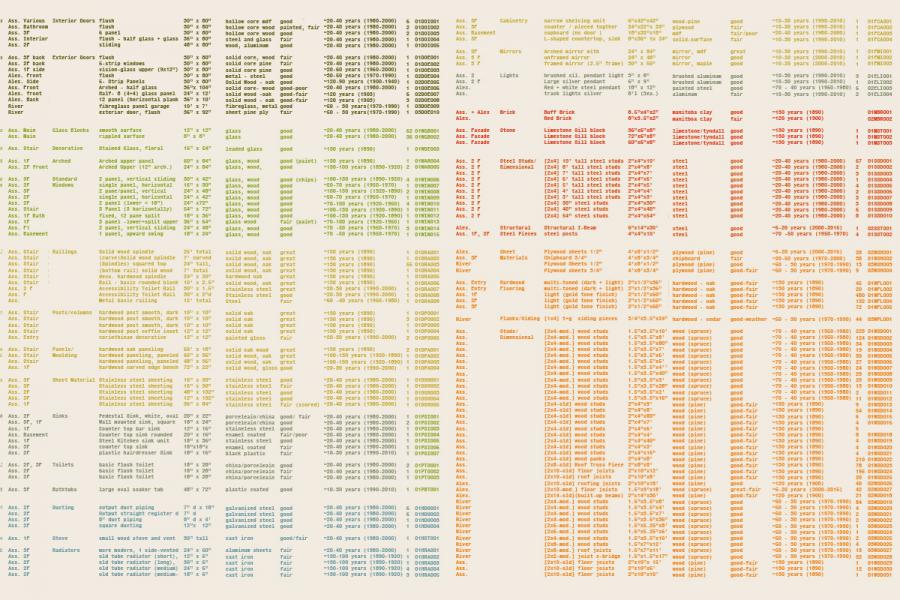
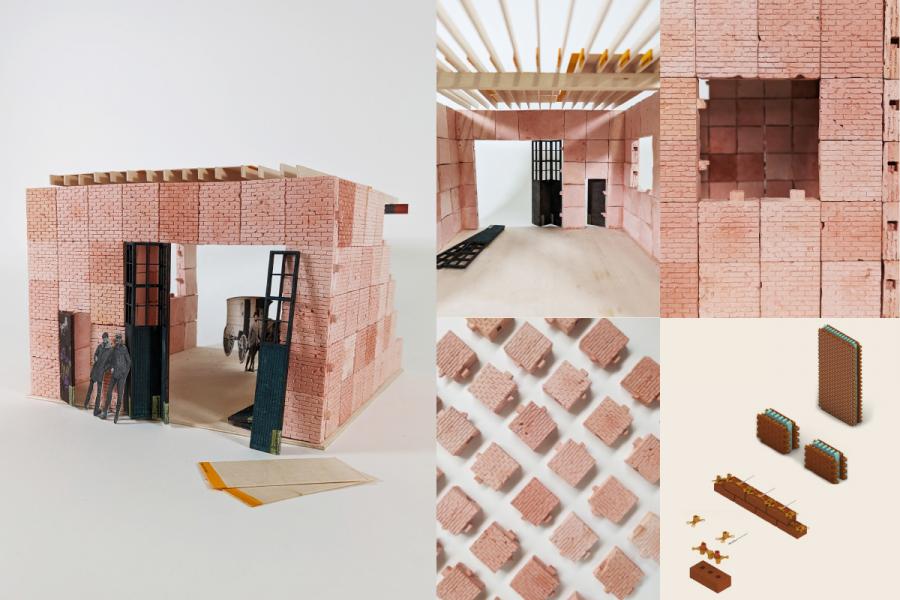
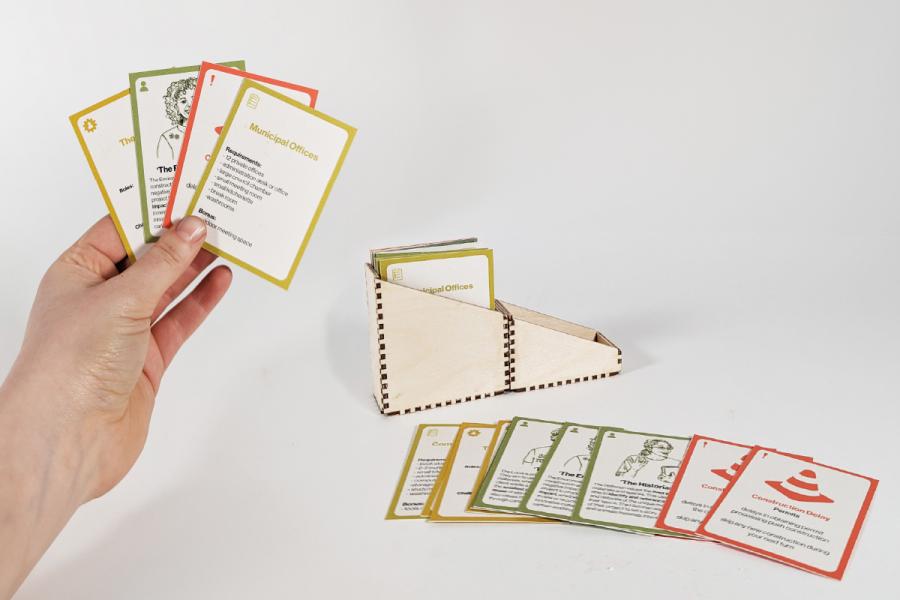
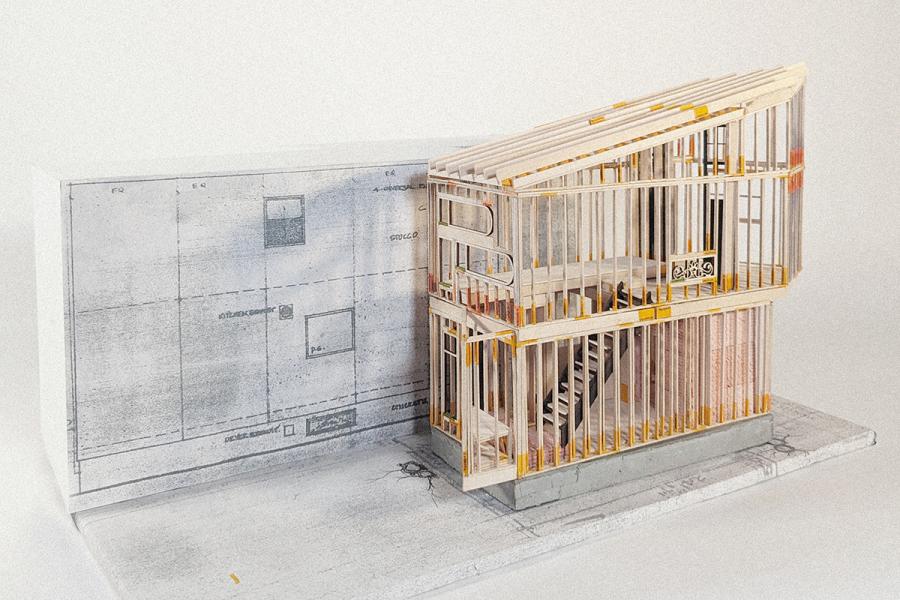
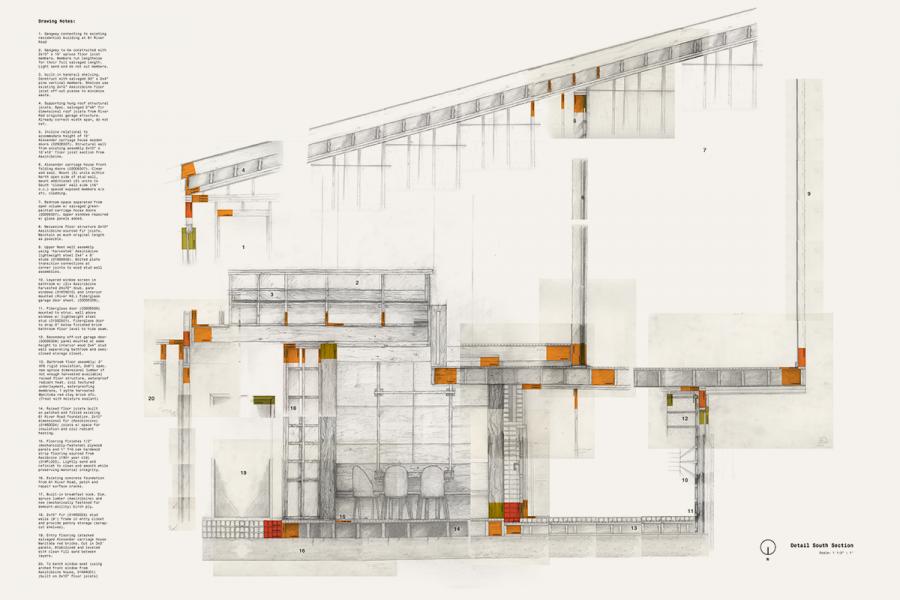
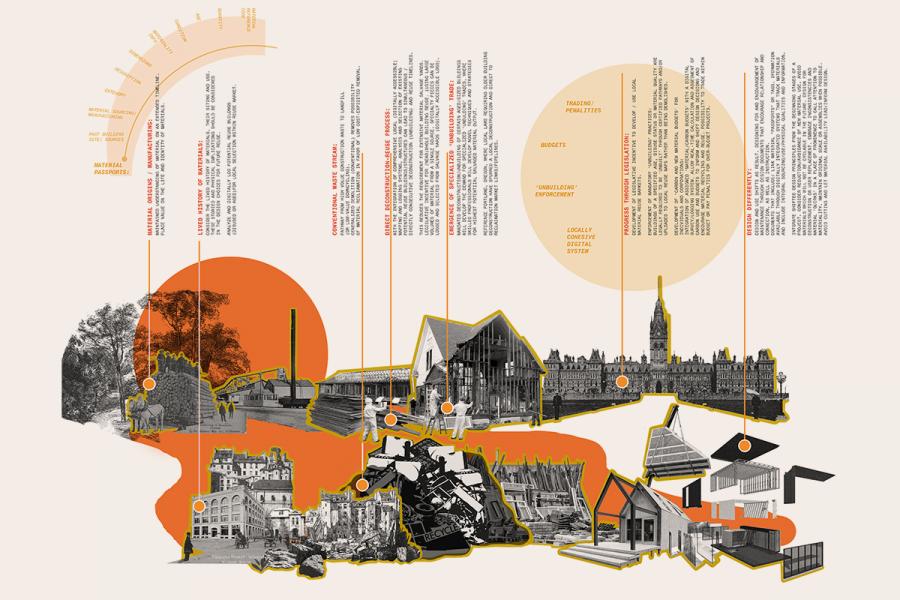
(De)Constructing the Material Cycle
The earliest intentions for this thesis work were framed by the realities of the capitalist and consumerist systems we exist and work within, where ideals of endless economic growth and unlimited resource availability have driven us to the incredibly wasteful and unsustainable economic practices which shroud our profession and construction industry. The North American construction industry still consumes 40 percent of total raw material resources each year, funneling these globally sourced materials into buildings which become material graveyards.1 In a time of climate crisis and future uncertainty, our culture is largely indifferent toward the life of materials beyond their use in an assembly and subsequent disposal into the waste stream.
I was driven with the ambition to challenge and examine these practices, to question and begin to understand how we can move away from our current wasteful linear economy, and toward a circular economy that pushes past our current methods of material reuse.
Reflecting on the energy and resources that go into the production of materials, and the extents of its impact on our world now and into the future, this work questions; how we can shift our thinking to honour this sacrifice and place the value on the life of materials (rather than the economic value) through conscious and active steps within our design process. Can become active agents within the design process. Is it possible to think of materials as autonomous, assigning “passports” to them at “birth” to claim identity and name them as they move throughout their lifespans? These questions guided the thesis through a process of exploring the complexities of a future cyclical building system. Through material harvesting, surveying, categorization and tracking from local disused buildings to an iterative design process and drawing, this thesis seeks to reuse these materials in an efficient and relational way.
1. Mark Gorgolewski, Resource Salvation: The Architecture of Reuse, (New Jersey: Wiley Blackwell, 2018), 8.
